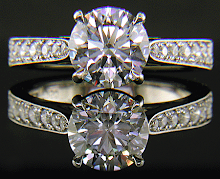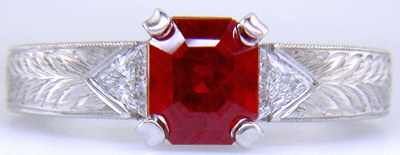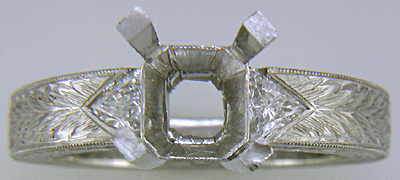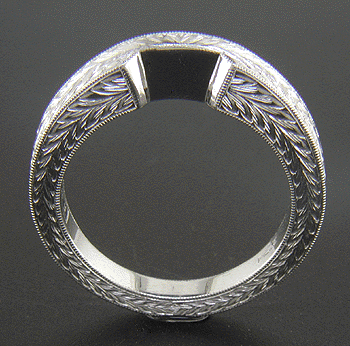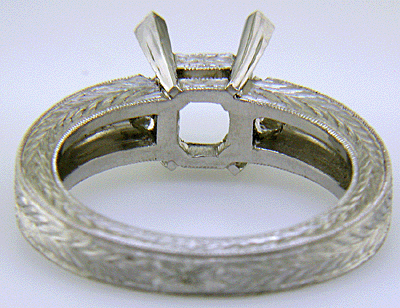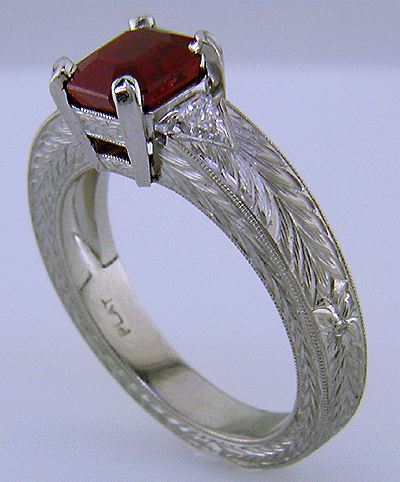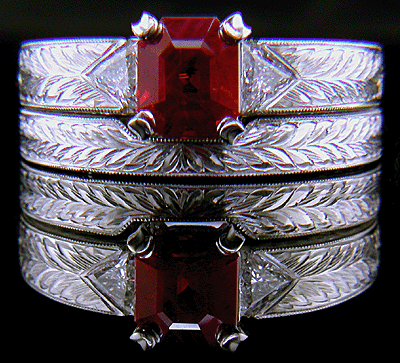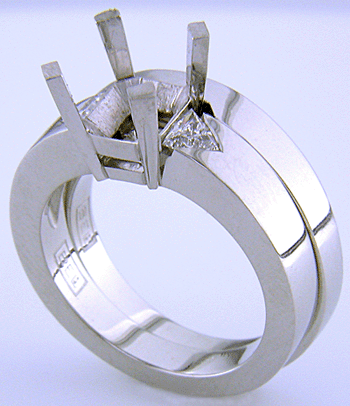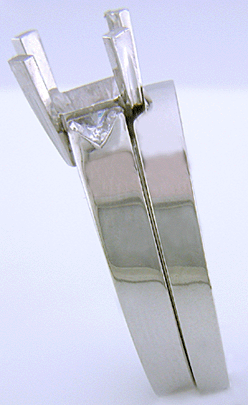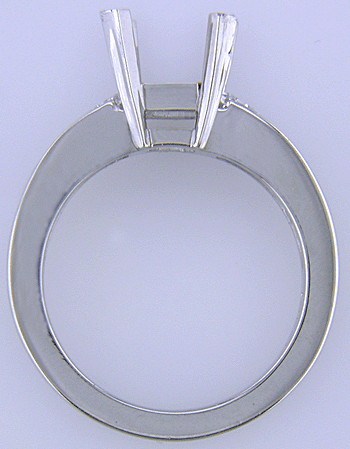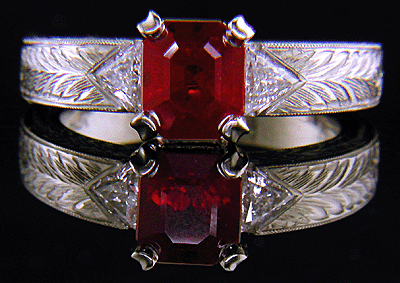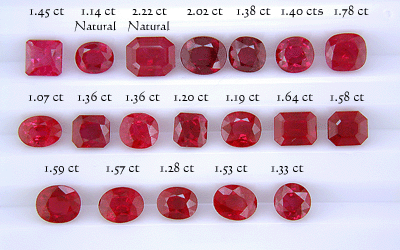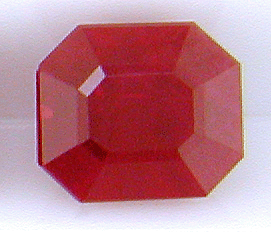The Great Ruby Hunt
Part II - The Hunt Continues
We were working with a client who wanted to create a striking Ruby and Diamond engagement ring. After evaluating a number of beautiful Rubies and assembling a strong grouping, the next step was to review the gemstones with the client and help her select the best Ruby for the ring.
The color of a gemstone can be described in terms of Hue, Tone and Saturation. Part of my task is to evaluate these components of color and help client's understand the subtle differences. My goal is to make sure that the client can make an educated, informed decision when purchasing a gemstone.
The human eye has difficulty seeing and remembering subtle differences in color, especially if you are looking at only one or two gemstones at a time. The best way is to examine and compare a number of gemstones all at once .... the more gems the better! Below is the dazzling array of Rubies I assembled for my client to review.
With a large number of gemstones the initial lineup can be overwhelming. After all, each of the gems is beautiful ... just in different ways.
The client was looking for a Ruby with a classic pure Red color. So, first I helped the client identify the Ruby that was the purest Red. Then we identified the Rubies with the strongest orangy Red and purplish Red hues. With these three gems as color benchmarks, we compared the remaining Rubies to determine where they fell on the color spectrum from orangy Red to Red to purplish Red.
By comparing a large number of Rubies all at once, my client was able to see how varying amounts of orange and purple affect a Ruby's color. Even more important she was able to decide which shade of red appealed to her most.
We used a similar technique to evaluate and compare the Saturation and Tone of each of the Rubies, creating benchmarks with the least and most saturated (intense) stones and then the stones with the lightest and darkest tones. This allowed our client to see how subtle differences in Saturation and Tone would affect the beauty of her Ruby.
After reviewing the Hue, Saturation and Tone of each Ruby, the client narrowed the initial field of nineteen Rubies to the following seven. These are the Rubies with color that really grabbed her!
The next step was to consider the Cut and Clarity of each of the Rubies. When evaluating a Ruby, Color is the most important factor. The Cut and Clarity are not insignificant, but they are less important than Color in determining value.
Rubies are often native cuts. This means the gems were cut at the source and tend to be cut more for weight and size than beauty. Some gemstone dealers will re-cut the stones they import; however, this is not the norm as it can be risky and costly. When judging the cut of a Ruby you want to note and avoid obvious windows, areas of extinction, misaligned facets, significantly asymmetrical shaped stones, and poor polishing. Improper cutting can affect the value, as well as durability of a gem.
Our client desired an emerald-cut Ruby, but would also consider an oval or cushion-shape stone if it was just the right color. After considering the cut characteristics of each of the remaining Rubies, our client narrowed the field to the following four - two emerald cuts and two oval brilliant-cuts.
The last factor to consider in evaluating Rubies is Clarity. Rubies are in the Type II Clarity Classification which means they typically occur with inclusions. Nearly flawless Rubies are extremely rare and expensive. A flawless Ruby can be rarer than a flawless diamond. Stones with inclusions that are very easy to see under 10x magnification and possibly visible to the naked eye are graded Very Slightly Included (VS) provided the inclusions are not too numerous and do not affect transparency or durability of the stone.
As with Cut, the Clarity grade does not appreciably affect the value of a stone except for flawless and heavily included examples. It is important to analyze the Clarity grade for several reasons:
1. It helps rate the relative quality and value of stones in a group.
2. Inclusions help confirm that a stone is natural and not synthetic. We only work with natural gems.
3. Inclusions can provide evidence of fracture-filling and heat treatment, which in turn affect rarity and value.
After reviewing all of the features of the remaining four Rubies, our client made the final choice. So which Ruby did she select? You may have already guessed, from the several hints I dropped.
................(drum roll).................
The winner is a 1.58 carat emerald cut with distinctively beveled corners. She loved the nearly pure Red hue of this Ruby, combined with the dramatic geometry of the cut and the stones silky appearance.
We started with 19 beautiful Rubies and through a process of careful elimination found the Ruby that best matched our client's desires. When hunting for an important gemstone it is worth taking the time to view and closely examine an array of gems. In this way you can find the best stone for your custom ring or jewel.
Now that our client has found the perfect Ruby, what's next? The whole process began with our client's desire for a rich red Ruby set in an engraved ring like the ones she had admired on our web site. We still needed to finalize the design, select the side diamonds and hand craft the ring. But that is the discussion for next time. Not to worry ..... I will not leave you hanging too long. Please check back soon for the rest of the story.




